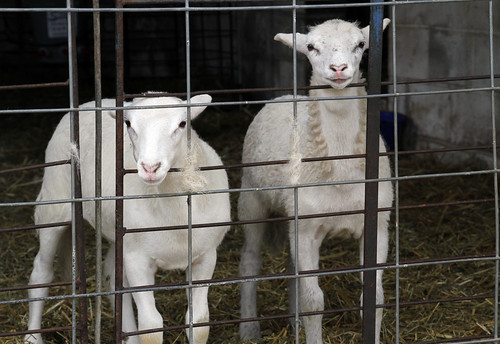Researchers in Arkansas compared weaning methods to determine effects on performance and behavior of lambs. 168 crossbred Katahdin lambs were utilized in two experiments. Traditional weaning was characterized by complete separation of lambs from their dams, whereas fenceline weaning maintained fenceline contact. In contrast with calves, lamb performance and behavior did not differ among weaning methods.
In two additional experiments, involving 190 Katahdin lambs, the time of day was added as a variable. The four treatment groups were 1) traditional-am; 2) traditional-pm; 3) fenceline-am; and 4) fenceline-pm. In these experiments, there were no beneficial effects of alternative weaning strategies. No performance differences were detected among treatment groups. The percentage of lambs vocalizing was greater among those with fenceline contact with their dams.
Source: Sheep & Goat Research Journal
 |
| There is no benefit to fenceline contact. |
In two additional experiments, involving 190 Katahdin lambs, the time of day was added as a variable. The four treatment groups were 1) traditional-am; 2) traditional-pm; 3) fenceline-am; and 4) fenceline-pm. In these experiments, there were no beneficial effects of alternative weaning strategies. No performance differences were detected among treatment groups. The percentage of lambs vocalizing was greater among those with fenceline contact with their dams.
Source: Sheep & Goat Research Journal

No comments:
Post a Comment